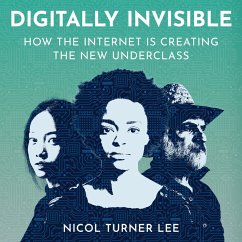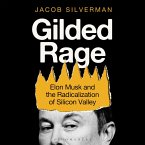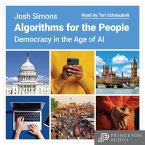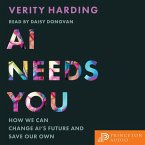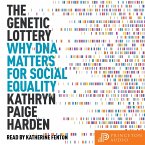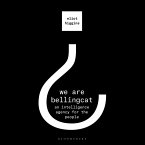Bloomsbury presents Digitally Invisible by Nicol Turner Lee, read by Rachel Handshaw. Billions of people around the world lack internet access. No one cared until the whole world had to go online. President Joe Biden has repeatedly said that the United States would close the digital divide under his leadership. However, the divide still affects people and communities across the country. The complex and persistent reality is that millions of residents live in digital deserts, and many more face disproportionate difficulties when it comes to getting and staying online, especially people of color, seniors, rural residents, and farmers in remote areas. Economic and health disparities are worsening in rural communities without available internet access. Students living in urban digital deserts with little technology exposure are ill prepared to compete for emerging occupations. Even seniors struggle to navigate the aging process without access to online information and remote care. In this book, Nicol Turner Lee, a leading expert on the American digital divide, uses personal stories from individuals around the country to show how the emerging digital underclass is navigating the spiraling online economy, while sharing their joys and hopes for an equitable and just future. Turner Lee argues that achieving digital equity is crucial for the future of America's global competitiveness and requires radical responses to offset the unintended consequences of increasing digitization. In the end, Digitally Invisible proposes a pathway to more equitable access to existing and emerging technologies, while encouraging readers to weigh in on this shared goal.
AI Equity Lab founder Lee argues that a digital divide persists in the United States due to race- and place-based discrimination. Her book notes three decades of federal efforts to foster digital equity, with particular attention to the Biden administration's policies and their limitations. Millions of Americans, especially people of color and those who live in low-income rural and urban areas, lack affordable broadband or high-speed internet access, and which prevents people from finding jobs, working remotely, accessing telehealth services or public benefits systems, doing homework, or even using modern farm equipment. Plus, analog and in-person services have diminished, leaving folks without broadband in the lurch. Lee recounts her travels around the country interviewing people impacted by the digital divide and recalls her time as a computer lab manager at a low-income residential tower in Chicago. This thorough narrative rethinks the digital divide from the lens and considerations of race and place. It's sure to inform debates and directions in public policy, industry, and civil society, including libraries.

